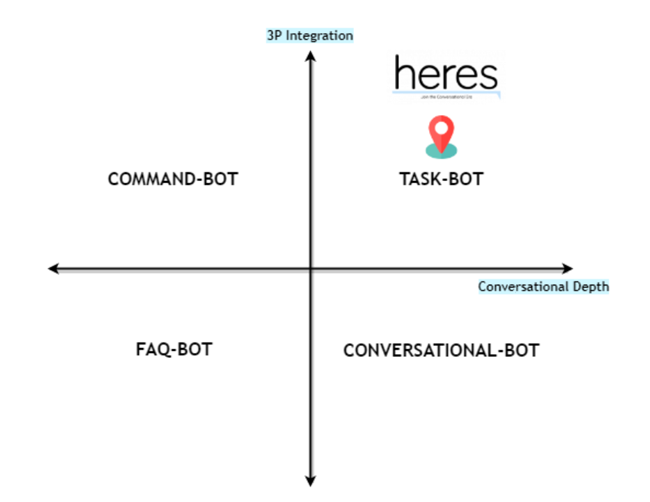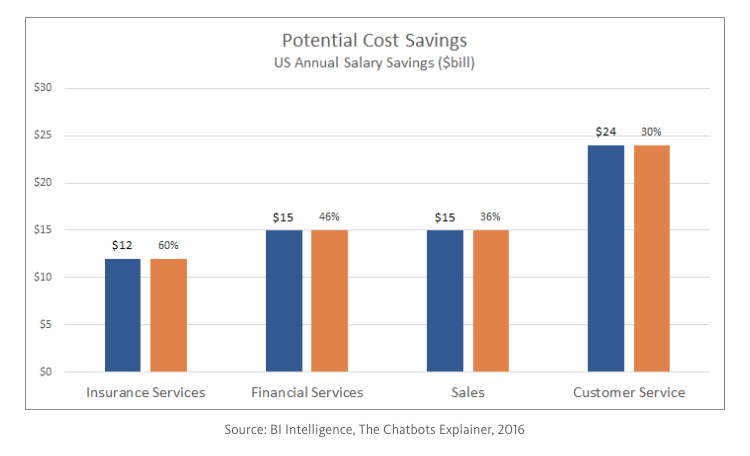If in 2017 we witnessed the explosive entrance of chatbots in the business world, in 2018 we are looking at them rising rapidly. There’s a chatbot for every need, and they are used in many fields, from customer service to booking, going through e-commerce and landing to public administration and recruitment. Users are getting more and more used to interacting with them on social platforms and websites: according to Business Insider, 45% of end users choose bots as their main communication means for customer service requests. We already know the great advantages that this technology can bring to company business, and we can’t ignore the fact that there are more and more companies stating that they use a chatbot or plan to implement one.
It’s clear by now that we are looking at a real Chatbot Revolution. But what do chatbots actually know and what can they really do? Are we really able to distinguish between the different existing types of chatbots?
In this article we’ll try to sort the most common chatbots out and define the fields where their features can be more useful and effective.
Ready? Let’s start!
We have spotted four different kinds of chatbots, based on two criteria: integration with third-party systems and conversational depth. Here we have organised our analysis on the 4 chatbot macro-categories that emerged on two Cartesian axes:

FAQ-Bots
The first type of chatbot is characterised by the lowest level of technical and conversational depth: its job is to understand the users’ requests and reply with ready-made FAQ, created by the client. The FAQ-Bot technology does not provide for contexts and connectors and does not integrate with the various platforms used by the client. The result is a one-step conversation that doesn’t memorise the data provided by the users, nor the steps or topics that have been discussed with them. Basically, the FAQ page of a company is turned into a chatbot that is capable of activating guided conversations with the users, and partly automatising the company’s customer service. The main goal of this type of chatbot is to solve the customers’ problems as quickly as possible, supplying all the answers they need in real time. Nonetheless, the one-step conversations that are typical of FAQ-Bots can turn out to be dry and not very pleasant. Even if companies may potentially save time, effort and money, this type of bot has limited features and achieves results that are just as limited, from a customer engagement and customer experience point of view.
Command-Bots
In the second category we find the bots that we call Command-Bots. Differently from the previous type, their technology allows the integration with the managing systems used by the client and are created to work by using specific codes. Users can write a series of commands, to which the bot associates more or less complex actions. A few examples: Command-Bots can keep track of your to-do list, look for a file in your Google docs or set a reminder. However, this type of bot has a clear limit: it’s not based on NLP or Machine Learning systems and so it can’t understand natural language. This means that in order to ask the bot to do anything you need to use specific syntax (for example //open_file, */send_doc). The conversational side is therefore inexistent and there’s no room for synonyms, variations or typos.
Conversational-Bots
If the goal of your brand is to attract new customers and improve the engagement of those you have already acquired, Conversational-Bots are what you need. These bots have better conversational skills and depth than FAQ-Bots and Command-Bots because they are created to simulate conversations that can also be very complex. They can be useful for brand positioning, brand storytelling, and to intercept new consumer targets (like millennials, for example). They are more common than the other types analysed until now and you can almost exclusively find them on Facebook Messenger. Differently from the FAQ-Bots, their aim is not to simply answer to frequent questions, but to entertain the users while providing useful information. The application fields are potentially infinite, from book and film suggestions to lifestyle, news and cuisine.
Conversational-Bots’ main problem is that they can’t go beyond mere entertainment: they don’t have connectors and can’t be integrated with third-party informative tools. Therefore, they can’t carry out complex tasks and operations.
Task-Bots
Finally, Task-Bots: they offer the best combination of all the elements that characterise the other chatbots we have analysed. But what can a Task-Bot really do and why is it different from the others?
First of all, this type of chatbot is based on a proprietary Artificial Intelligence platform and has developed high conversational skills and depth thanks to its integration with the most advanced NLP solution, Google API.AI, able to understand any conversation in any context thanks to the deep learning process. Through the connectors, the Task-Bot is able to integrate with the client’s management platforms (like Magento, SAP, Salesforce, Hybris, Zendesk, Qapla) and also with the CRM, CMS and ERP informational tools. Such integrations enable the Task-Bot to manage, for example, the product database, store locator, opening times and much more. Furthermore, the conversational architecture offers the added value of working with memory, contexts, logics and slot-filling.
With these features, bots are able to carry out complex tasks, entertaining and offering a dedicated and customised UX. For example, a Task-Bot can return goods, cancel orders, send documents, book medical exams, sign customers up for the fidelity card and much more. This is why they are versatile, scalable and very useful in many fields.
Where is the Heres chatbot positioned?
Our enterprise solution is definitely a fully-fledged Task-Bot. It actually launches this category of chatbot, at least on the Italian market, because it is one of the first enterprise solutions to be able to carry out complex operations and to integrate with the whole informational system and all the channels of the client, going beyond the FAQ-Bot and Conversational-Bot ideas and paving the way for a new style of communication with the customer.
Moreover, our chatbots can learn from their conversational experience, increasing their performance conversation after conversation and reaching, in the most successful cases, up to a 50% reduction in the number of people contacting customer service staff.
One goal, one chatbot
Chatbots are good for any type of business, from a small local shop to a multinational company, but as we have just learned, not all of them are fully optimised in different fields and they can actually obtain results that are far from expectations. Our advice, then, is to carefully choose your chatbot keeping in mind what you want to achieve.
If you’re looking for a way to make your customer service more efficient and to promote your brand, entertaining your customers in a personalised way and focusing on engagement, Heres is the perfect bot for you!




